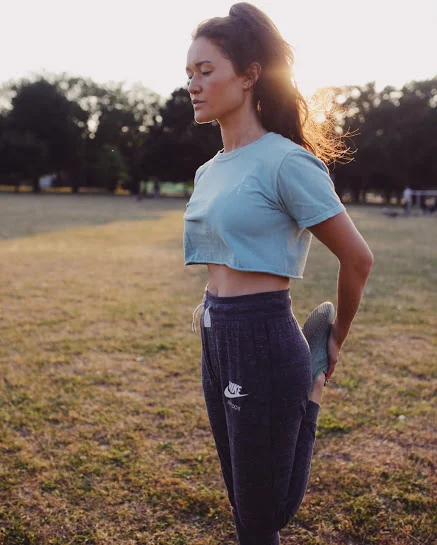Ethical Trainers: The Struggle is Real
My old Nike Frees, bought around May 2014, were falling apart - so, having been advised not to run in them if I wanted my shin splints to get any better, I began my search for environmentally-friendly, ethically-made running shoes.
I hadn’t bought a pair since I ‘went ethical’ in September 2014 (buying only second-hand clothes or those made from recycled material), so I was fresh meat to be persuaded by the green trainer market. Only, when I started looking… this green trainer market was nowhere to be found!
So, as with all serious research, I began with Google.
Ethical Consumer's shopping guide to trainers, taken from ethicalconsumer.org
Firstly, I learned that the trainer manufacturers rated highest by Ethical Consumer - Ethletic Shoes, Patagonia and Umbro - don’t offer running shoes (in the UK, and as far as my Googling took me). Further to this, the drop from first-place Ethletic’s rating of 20/20 down to second-place Patagonia’s rating of 7/20 is steep; none below Ethletic look to be rated highly when measuring across factors of Environment, Animals, People, Politics and Product Sustainability with equal importance placed on each factor.
(Shout-out, however, to Ethletic Shoes - this seems like a great choice for casual sneakers, and I’d encourage any Converse-lovers to check them out.)
Clearly there was no easy answer to my question of which running shoes were most ethical. I figured I should next research if there was such a thing as trainers made from recycled materials or that have a minimal carbon footprint. My second lesson learned was that trainer midsoles (that’s the bit that’s normally quite thick - the bit that holds the bubble in an Air Max, for example, between the insole and the bit that touches the floor) take 1000 years to biodegrade. ONE. THOUSAND. YEARS.
Whilst the effects of plastic bags on the environment have been documented thoroughly, with reduce-reuse-recycle campaigns popping up everywhere we shop and with supermarkets and local councils encouraging consumers to help the earth by lessening waste, we should too be educated on the effects of fashion consumerism on the environment. (Learning about midsoles, I was unable to find any info on ways that we can recycle them into new products, so I’d be interested to hear from anyone with ideas for this.) I wanted to overcome the issue of buying a pair of shoes whose remnants would still be kicking around in 3015, and so I formed a little plan based on my research.
How can we obtain ethical running shoes with what’s currently offered on the market?
BioMoGo midsoles - this is a relatively new midsole that takes 25 years to biodegrade
Barefoot-style running shoes - these don’t have a midsole at all
Buy second-hand trainers
So I started with (1).
BioMoGo soles
I couldn’t find a website for BioMoGo themselves - just lots and lots of pages referring to Brooks running shoes and the fact that they used them. FWIW, I checked Brooks on Ethical Consumer and they had a really low rating - but, as almost all trainer-makers had a similarly low rating, I had a look at their BioMoGo running shoes online.
I just wanted some plain-as-possible, black, non-descript trainers that blend in with proper gym gear and casual outfits. My partner-in-crime trainers at the time were Nike Free 4.0s (? maybe - I’d worn them out so much you weren’t able to read the model name) and they needed upgrading badly. One of the Nike swooshes had fallen off, there were holes in the sides and I hadn’t been able to go for a decent run in months because of the nagging shin splints that those babies probably didn’t help.
After a good browse, I went with Brooks Adrenaline GTS 15. They arrived super-quickly, and my eyebrow-raising colleagues who regularly get Nike & Asos delivered to the office watched with baited breath as I opened the box.
The offending Brooks GTS 15
Verdict: I love being green, but these shoes were too f***ing ugly to wear. My colleagues offered to pay me if I sent them back. They looked like part of a 10-year-old boy’s PE kit, and I just couldn’t wear them to work. This might seem very shallow, but let’s look at it from a utilitarian viewpoint: I want to buy sparingly and ethically. If I wore these as an example to my peers of ‘ethical trainers’, they would conceive ‘ethical trainers’ as an unfashionable, aesthetically ugly concept. They shop for aesthetics above all else. Wearing these, although good for my conscience, wouldn’t help the cause.
I sent my Brooks GTS 15 back to where they came from, and was the butt of many-a-joke along the lines of “it’s not very environmentally friendly to have them sent back, is it?” ...FML.
So I was back to the drawing board. Time to look into option (2).
Barefoot running shoes
An online search for proper barefoot running shoes available in the UK, that don’t have a midsole, returned just a couple of options: Vibram FiveFingers and VIVOBAREFOOT.
Vibram FiveFingers - taken from vibramfivefingers.com
Vibram FiveFingers seem to have the technology locked down, and I really did consider getting them for a moment or two. But I’m not going to put myself out there and try to set the trend and make these acceptable to wear on the street, because I don’t carry that influence. Aesthetically, they still gross me out a bit inside - and that’s my problem, not theirs. Kudos to those who are brave enough to wear these, and maybe I’ll join you someday.
VIVOBAREFOOT - if I didn’t know that these were beneficial to the environment when compared with other trainers, I would never look twice at them. This thought kept creeping in when I was considering purchasing a pair. (They look like weirdly-coloured plimsolls with a geometric sticker thoughtfully stuck on the outer side.) What I’m saying is: it would be awesome for the market to offer aesthetically pleasing, environmentally friendly running shoes.
VIVOBAREFOOT Stealth, taken from vivobarefoot.com
I did go into VIVOBAREFOOT in Covent Garden to try the shoes on, and was advised to take a size 5 rather than my usual 3.5 because “they need to be really roomy”, in which case I don’t understand why they don’t label the 5 “3.5” and give people the shoe in their usual size.
I was intrigued by the fact that I could have fit two fingers between the end of my toe and the end of the shoe, and asked if I could test them out somehow as I’d never run barefoot before. They don’t provide a treadmill or anywhere to practise, and pointed me towards a course they offer in barefoot running which costs something like £150 on top of the £100 you’re paying for the geometric extra-long plimsoll thing that’s kind of ugly. I had tried on one of the luminous pairs as that’s the only pair they had in a 5 (/3.5), and upon asking when they were expecting their next delivery the salesperson advised me that he didn’t know and to keep coming back now and then to check. That whole experience crossed VIVOBAREFOOT off of my list for the time being, but maybe I will go back and check once my Final Destination trainers wear out, to see if there’s any improvement there.
Slightly drained from my failing mission, I crawled on to option (3).
Buying second-hand trainers
I looked for second-hand running shoes on eBay, Amazon and second-hand clothing app Vinted. Very few were actual running shoes - most were casual trainers even with the filters selected. I continued searching for a couple of weeks so not to cast off the idea too soon, as more second-hand goods are constantly being posted online.
I pictured finding some pretty much new shoes, perhaps that someone had accidentally bought in the wrong size and weren’t able to return for whatever reason, or some that had been taken for a couple of runs but that had proved uncomfortable for the runner. The only such shoes I could find in my size were a couple of pairs of Nike Roshe Runs (I wasn’t fussed about the brand). I got overexcited, saw that they had a lot of interest from other users, and quickly bought them.
The ones that got away: Nike Roshe Runs on Vinted
I then read reviews online that they are only good for casual runners, and spoke to my colleague who said that they barely hold up for a full day of dance practice, and cancelled the purchase. I wanted shoes I could trust for multiple runs and a lot of walking - week-in, week-out.
Of the second-hand running shoes that looked a bit more battered, I found a few in my size - but you just don’t know the true mileage of them by the time they come to you. I decided I had to place logic over pride: if I kept walking and jogging in my damaged, worn-out shoes, it was more than likely I’d soon face more injury and not be able to walk the ten-mile-round work-to-home commute each day, falling back on public transport as my Plan B. I know, if I truly placed logic over pride, I’d suck it up and buy FiveFingers and not give a shit what I looked like. But I’m just not there yet, and I would rather reach out and plead running shoe manufacturers to start offering aesthetically-pleasing, environmentally-friendly running shoes that are produced as fairly as possible. I hope the standard Nikes I bought this time will last until a better option goes mainstream.
Interim un-green shoes
Brooks, Nike, Adidas, ANYONE… please harness the power of aesthetic design and produce an environmentally-friendly running shoe that will appeal to those that shop for looks and shop for ethics alike.
I’ll be looking for ethical sportswear next, so if you have any tips on buying, please email me at hello@serenalee.co.uk and help me to get greener!
Thanks for reading!
Serena













